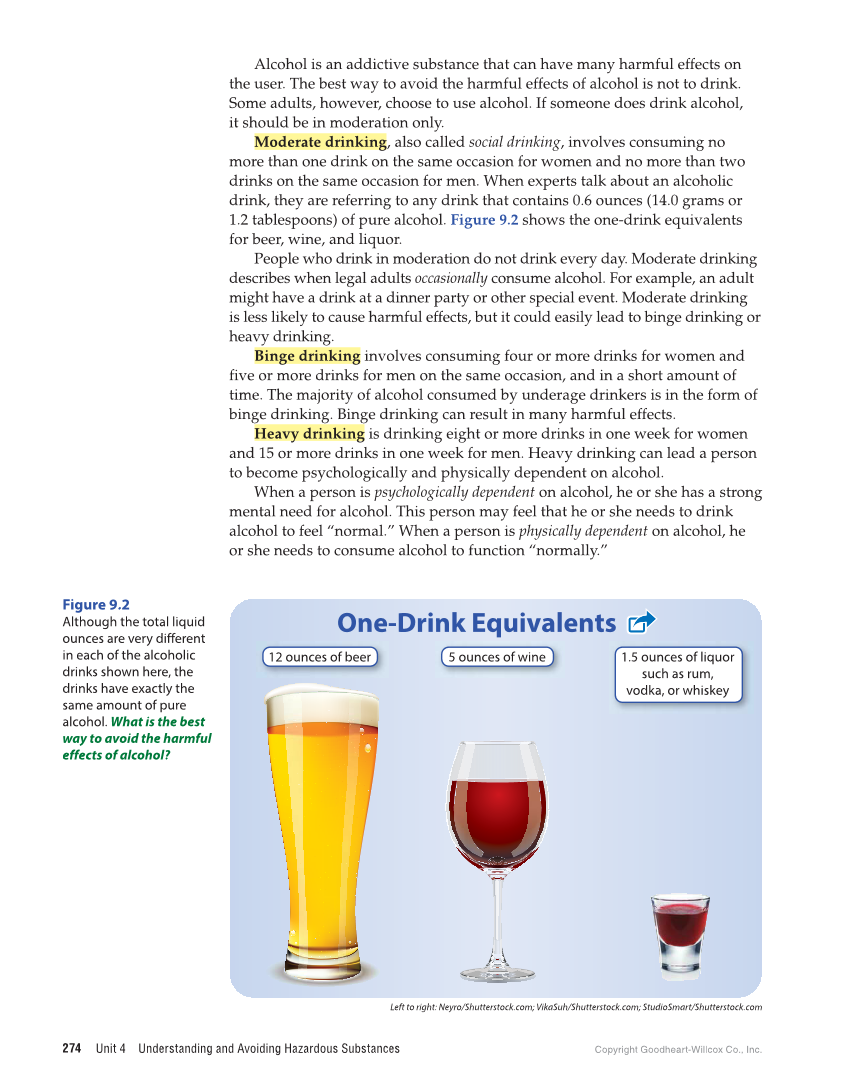Unit 4 Understanding and Avoiding Hazardous Substances Copyright Goodheart-Willcox Co., Inc. 274 Alcohol is an addictive substance that can have many harmful effects on the user. The best way to avoid the harmful effects of alcohol is not to drink. Some adults, however, choose to use alcohol. If someone does drink alcohol, it should be in moderation only. Moderate drinking, also called social drinking, involves consuming no more than one drink on the same occasion for women and no more than two drinks on the same occasion for men. When experts talk about an alcoholic drink, they are referring to any drink that contains 0.6 ounces (14.0 grams or 1.2 tablespoons) of pure alcohol. Figure 9.2 shows the one-drink equivalents for beer, wine, and liquor. People who drink in moderation do not drink every day. Moderate drinking describes when legal adults occasionally consume alcohol. For example, an adult might have a drink at a dinner party or other special event. Moderate drinking is less likely to cause harmful effects, but it could easily lead to binge drinking or heavy drinking. Binge drinking involves consuming four or more drinks for women and five or more drinks for men on the same occasion, and in a short amount of time. The majority of alcohol consumed by underage drinkers is in the form of binge drinking. Binge drinking can result in many harmful effects. Heavy drinking is drinking eight or more drinks in one week for women and 15 or more drinks in one week for men. Heavy drinking can lead a person to become psychologically and physically dependent on alcohol. When a person is psychologically dependent on alcohol, he or she has a strong mental need for alcohol. This person may feel that he or she needs to drink alcohol to feel “normal.” When a person is physically dependent on alcohol, he or she needs to consume alcohol to function “normally.” One-Drink Equivalents 12 ounces of beer 5 ounces of wine 1.5 ounces of liquor such as rum, vodka, or whiskey Left to right: Neyro/Shutterstock.com VikaSuh/Shutterstock.com StudioSmart/Shutterstock.com Figure 9.2 Although the total liquid ounces are very different in each of the alcoholic drinks shown here, the drinks have exactly the same amount of pure alcohol. What is the best way to avoid the harmful effects of alcohol?
